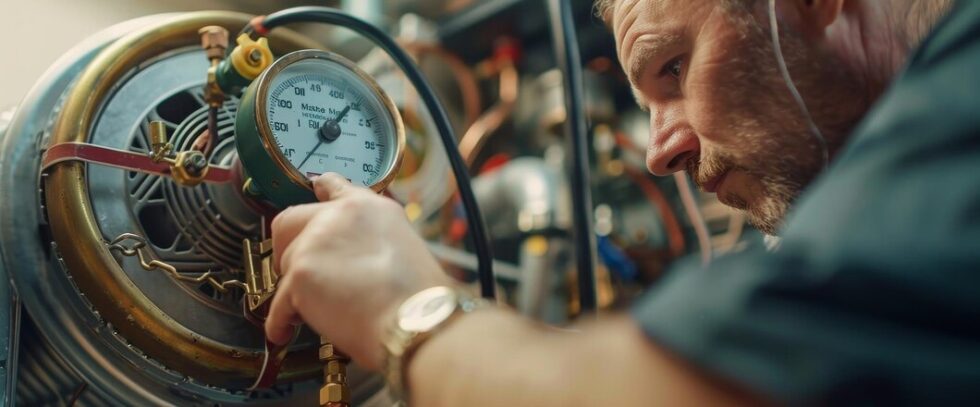
In the realm of fluid mechanics and engineering, the measurement of pressure is paramount. Whether it’s monitoring the pressure in a pipeline, assessing the performance of machinery, or conducting experiments in a laboratory setting, accurate pressure measurement is indispensable. One of the essential tools in this domain is the manometer. In this comprehensive guide, we will delve into the intricacies of manometers, exploring their types, working principles, applications, and significance in various fields.
What is a Manometer?
A manometer is a device used to measure the pressure of liquids and gases. It consists of a transparent tube partially filled with a liquid (often mercury or water) and connected to the system whose pressure needs to be measured. The height of the liquid column in the tube varies according to the pressure exerted by the fluid being measured.
Types of Manometers
Manometers come in several configurations, each tailored to specific applications and operating principles. Here are some common types:
U-Tube Manometer: This is the simplest form of manometer, consisting of a U-shaped tube partially filled with liquid. The pressure difference between the two arms of the U-tube causes a displacement of the liquid, which can be measured to determine the pressure.
Inclined Manometer: In this type of manometer, the U-tube is inclined at an angle rather than being vertical. This design allows for more precise measurements, especially in situations where space is limited.
Piezometer Tube: A piezometer tube is a simple vertical tube open at the top and connected to the system whose pressure is being measured. The height of the liquid column in the tube corresponds to the pressure exerted by the fluid.
Differential Manometer: This type of manometer is used to measure the difference in pressure between two points in a system. It typically consists of two legs connected to the points of interest and a common reference point, allowing for accurate differential pressure measurement.
Working Principle of Manometers
The operation of a manometer relies on the fundamental principles of fluid mechanics, particularly Pascal’s law, which states that the pressure exerted at any point in a confined fluid is transmitted undiminished in all directions. Based on this principle, the height of the liquid column in a manometer varies in response to the pressure applied to it.
When connected to a system, the manometer tube experiences a pressure difference between the fluid inside the system and the atmosphere. This pressure difference causes the liquid in the manometer tube to move, with the height of the liquid column directly proportional to the pressure difference.
Applications of Manometers
Manometers find applications across various industries and scientific disciplines. Some common applications include:
Industrial Process Control: Manometers are used in industrial settings to monitor and control the pressure of fluids in pipelines, tanks, and machinery. They help ensure the efficient and safe operation of industrial processes.
HVAC Systems: Heating, ventilation, and air conditioning (HVAC) systems rely on manometers to measure air and gas pressures within ducts and ventilation systems. This information is crucial for maintaining indoor air quality and optimizing energy efficiency.
Medical Devices: Manometers play a vital role in medical devices such as blood pressure monitors and respiratory equipment. They accurately measure blood pressure and airflow, providing essential diagnostic information for healthcare professionals.
Fluid Dynamics Research: In research laboratories, manometers are used to study the behavior of fluids in various experimental setups. They help researchers understand phenomena such as fluid flow, turbulence, and pressure gradients.
Significance of Manometers
The significance of manometers in engineering and scientific endeavors cannot be overstated. Here are some reasons why manometers are indispensable tools:
Precision: Manometers offer high levels of precision and accuracy in pressure measurement, making them ideal for applications where precise control and monitoring are required.
Versatility: With different types and configurations available, manometers can be adapted to suit a wide range of applications, from industrial process control to laboratory research.
Cost-Effectiveness: Compared to electronic pressure sensors and transducers, manometers are often more cost-effective, especially for applications where high accuracy is not essential.
Reliability: Manometers are simple devices with few moving parts, making them reliable and easy to maintain. They can withstand harsh operating conditions and continue to provide accurate measurements over extended periods.
Conclusion
Manometers are indispensable tools for measuring pressure in various fluid systems. Their simplicity, versatility, and reliability make them essential instruments in industries ranging from manufacturing and healthcare to research and development. By understanding the principles of operation and applications of manometers, engineers, scientists, and technicians can leverage these devices to ensure the safety, efficiency, and performance of fluid-based systems.









